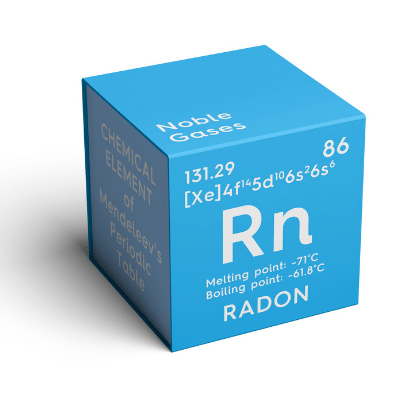Radon and moisture may seem like two completely separate issues, but in reality, they often appear together in homes—and for good reason. Understanding why they’re linked and how to address them can help protect both your property and your family’s health.
What Is Radon?

Radon is a naturally occurring radioactive gas that has no color, odor, or taste. It forms when uranium in the soil breaks down over time. Radon can seep into homes through cracks in the foundation, gaps around plumbing, or other openings where the soil meets the structure.
The Environmental Protection Agency (EPA) reports that radon is the second leading cause of lung cancer in the United States, making it a serious concern for homeowners, especially in areas with high radon levels, like Nebraska and Iowa.
How Moisture Creates a Pathway for Radon
Moisture in basements, crawl spaces, or under slabs isn’t just a nuisance—it can make radon entry easier. Here’s how:
- Cracks and Gaps Widen: Water can erode concrete and soil, enlarging the cracks and gaps through which radon enters.
- Pressure Changes: Damp soil retains more heat and expands, which can create slight pressure differences between the soil and your basement. This draws radon upward into your home.
- Porous Surfaces: Moisture can seep into porous concrete or masonry, carrying radon gas along with it.
Health Implications of Moisture and Radon Together
Moisture problems can create an ideal environment for mold and bacteria to grow. When combined with radon, this creates a dual hazard:
- Radon exposure increases the risk of lung cancer.
- Mold and bacteria can aggravate respiratory issues, trigger allergies, and worsen asthma.
Having both issues in the same area increases the overall health risk, particularly for children, elderly family members, or anyone with preexisting respiratory conditions.
How to Detect and Mitigate Radon and Moisture
- Radon Testing: Short-term kits can detect radon levels in as little as 2 days, while long-term tests (90+ days) provide a more accurate average. Homes with levels above 4.0 pCi/L require mitigation.
- Moisture Inspection: Look for musty smells, condensation on walls, standing water, or visible mold. Check crawl spaces, basement walls, and slab edges.
- Professional Mitigation: Installing a sub-slab depressurization system is the most common way to reduce radon levels. Simultaneously, a professional waterproofing solution—like interior drainage systems, sump pumps, or vapor barriers—can reduce moisture.
- Preventive Maintenance: Keep gutters and downspouts clear, grade the soil to slope away from the foundation, and seal cracks and gaps.
Why Addressing Both Matters
Tackling only radon or only moisture leaves your home vulnerable. Reducing moisture helps slow radon infiltration, while proper radon mitigation ensures gas isn’t accumulating in your living spaces. Together, these steps make your home healthier and safer for your family.
Protect Your Home in Nebraska and Iowa
At Jerry’s Waterproofing, we specialize in radon mitigation and basement waterproofing. Our experts can inspect your home, test radon levels, and install the right mitigation and waterproofing solutions to keep your family safe. Contact us today to schedule a consultation.



